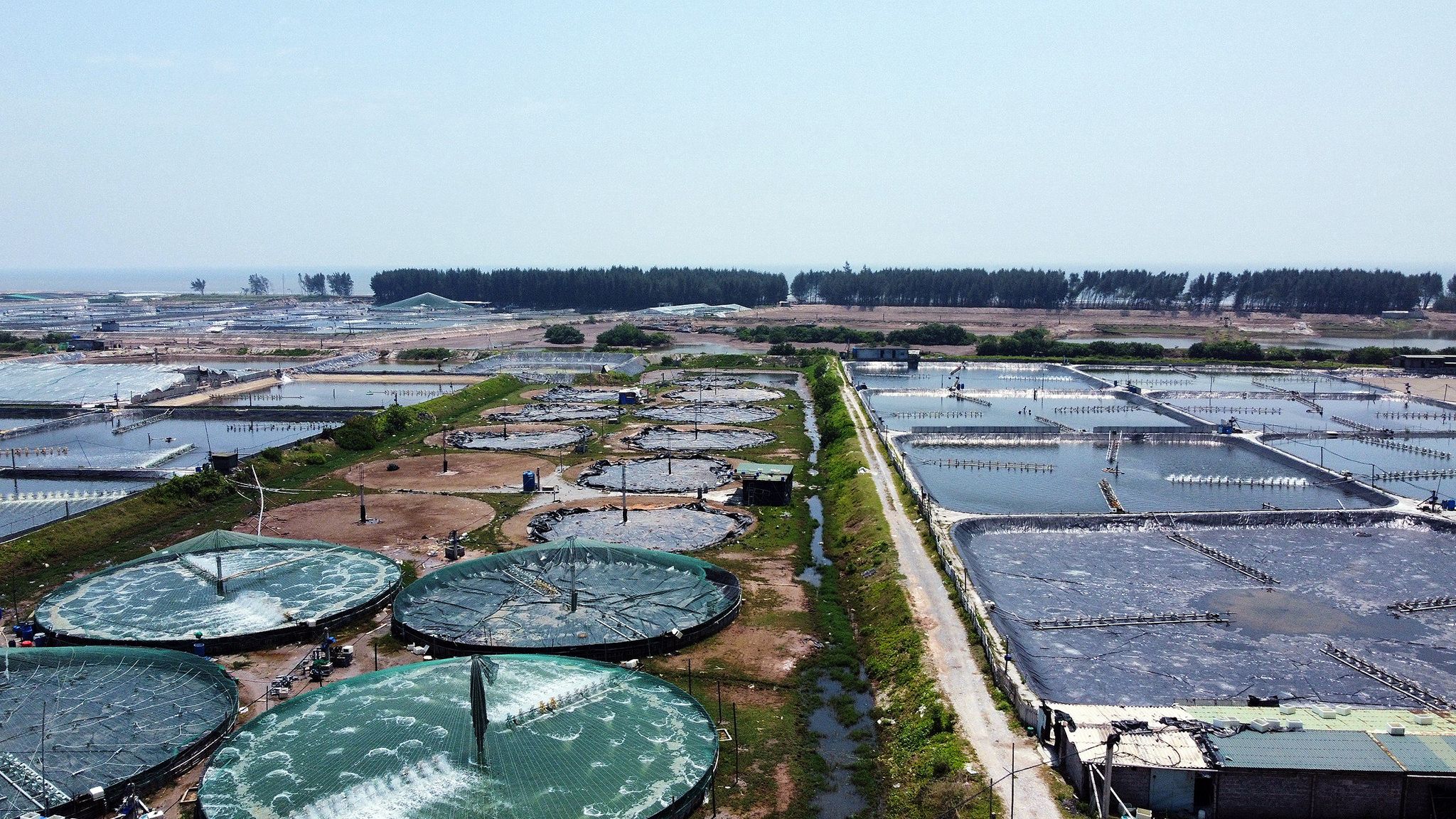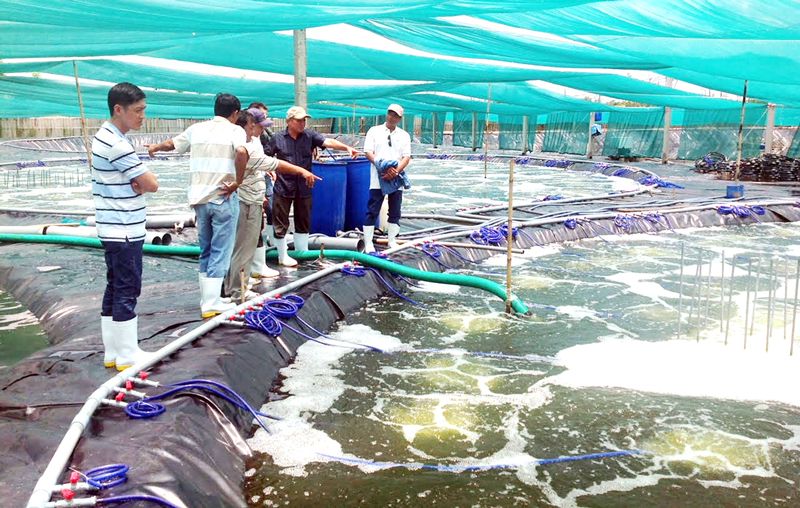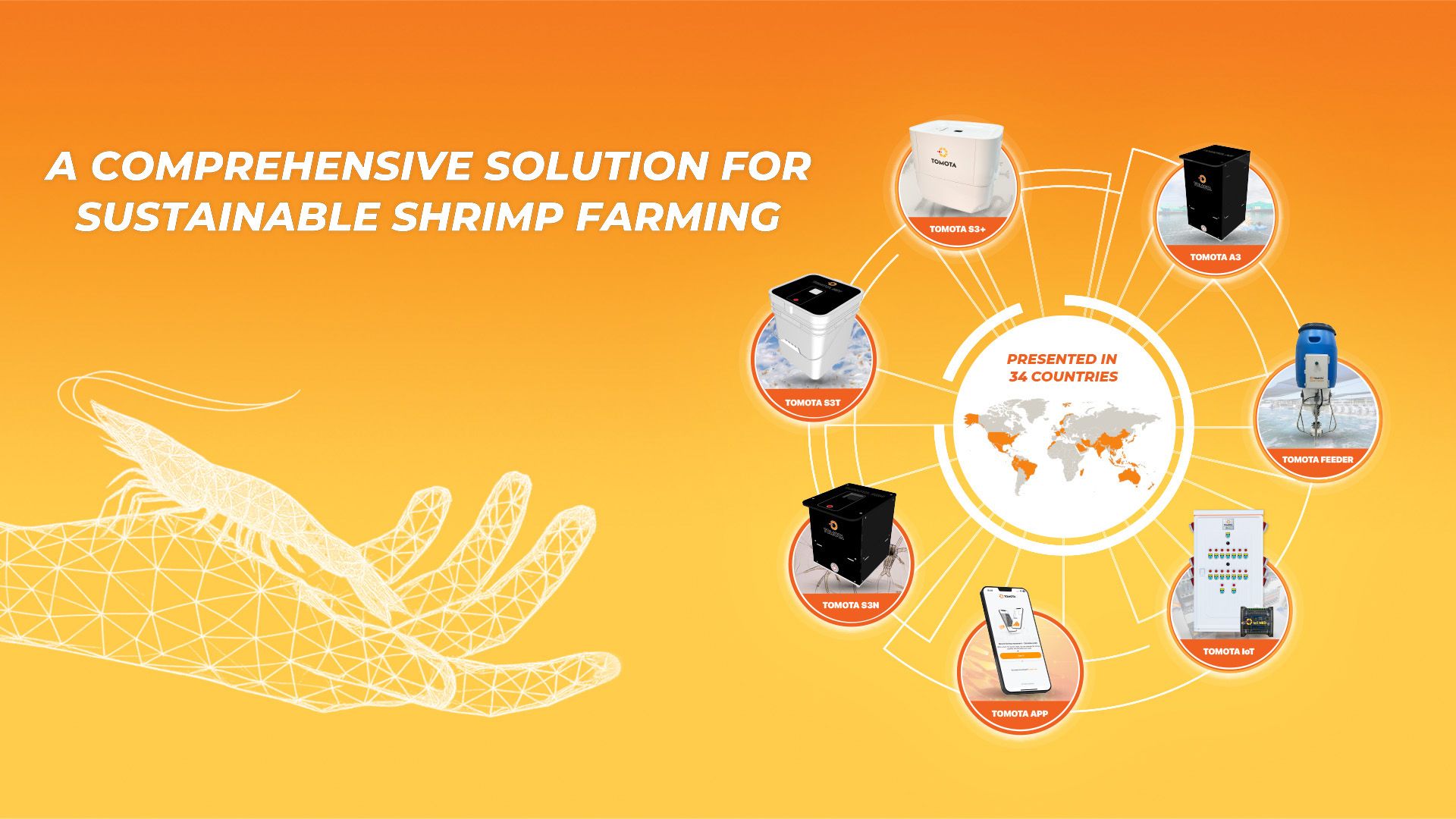APPLYING TECHNOLOGY TO DRIVE THE CIRCULAR ECONOMY
In today’s digital age, the application of technology is no longer a foreign concept - especially for farming households in Vietnam and across many other countries. Integrating digital tools into farm management and operations has become increasingly common thanks to the practical benefits they bring, such as optimizing workflows, tightly controlling investment costs, and enhancing the ability to monitor shrimp growth in each pond quickly and accurately.
Digital transformation is no longer unfamiliar
Digital transformation and innovation in the aquaculture industry are becoming a necessary trend in the context of the Fourth Industrial Revolution. This momentum is not limited to government bodies and local authorities; the business community is also actively participating. In key regions like Ho Chi Minh City, Hanoi, and Hai Phong, the push for digitalization is especially encouraged and accelerated.

The term "digital transformation" began gaining more attention after the COVID-19 pandemic - a global crisis that significantly impacted economic and social development, particularly in critical economic zones. However, the pandemic also accelerated the pace of digitalization and innovation, strengthening the resilience of businesses and farmers while advancing the development of digital government and digital society initiatives.
Shrimp Farming: Embracing Change Through Technology
In shrimp farming, challenges such as disease outbreaks and adverse weather conditions have driven farmers to adopt more flexible and adaptive solutions. Many farms have moved from intuition-based management to data-driven decision-making thanks to digital technology. Farmers no longer have to "guess" - they can monitor ponds in real time and make informed decisions based on clear data.

As digital tools continue to advance, technology is becoming an indispensable assistant, helping farmers quickly and accurately grasp the status of their ponds. With data updated daily, it's easier than ever to track changes and respond promptly. This approach lays the foundation for developing a robust circular economy in aquaculture.
In recent years, Tomota has become one of the most trusted tech solutions in the shrimp farming community, both domestically and internationally, supporting farm operations across multiple grow-out cycles.
Learn more about Tomota at: https://tomota.vn
Unlocking the Potential of a Circular Economy
The circular economy holds immense potential for the aquaculture industry, particularly in shrimp farming. The key now is to identify sustainable models and expand their reach nationwide.
Benefits of building a circular economy in shrimp farming include:
-Reducing water pollution
-Minimizing disease outbreaks
-Optimizing production costs
-Improving operational efficiency
-Increasing the value and income from farmed shrimp
When combined with technology, the shrimp sector can not only conserve resources but also better control unnecessary expenditures - contributing to higher quality and greater market value for Vietnamese shrimp both at home and abroad.
Technology as a Catalyst for the Circular Economy
Given the vast potential of circular practices in aquaculture, technology serves as a powerful catalyst. By optimizing resource management, monitoring environmental conditions, and enabling resource reuse, tech solutions help reduce pollution, limit waste, and improve production efficiency.

Tomota was born with a mission to deliver sustainable, comprehensive management solutions for the shrimp farming industry. Our goal is to make technology easy to use, effective, and accessible to farmers of all levels.
Tomota's key features include:
-Automatic storage and analysis of farming data
-Support for accurate decision-making based on real-time information
-Strict monitoring of water quality and shrimp health
-Optimization of time, resources, and investment costs
At Tomota, we believe that with the practical value technology brings, building a circular, data-driven shrimp economy is not a distant vision. It can begin today - from every pond, every farmer, and every smart decision powered by technology.
